COVID 19 Tax and Other Relief Provisions for Financial Institutions
Community Bank Leverage Ratio
The office of the Comptroller of the Currency (OCC), along with the Board of Governors of the Federal Reserve System and the Federal Deposit Insurance Corporation (collectively, the agencies) have approved an interim final rule as of April 6, 2020 that makes temporary changes to the community bank leverage ratio framework (CBLR framework), pursuant to section 4012 of the Coronavirus Aid, Relief, and Economic Security (CARES) Act, and a second interim final rule that provides a graduated increase in the community bank leverage ratio requirement after the expiration of the temporary changes implemented pursuant to section 4012 of the CARES Act. Note: This interim final rule applies to qualifying community banks with less than $10 billion in total consolidated assets that meet other criteria and opt into the CBLR framework.
Under the rule, the CARES Act reduces the Community Bank Leverage Ratio (CBLR) to 8% from the previous minimum of 9%. The two interim final rules modify the CBLR framework in the following ways:
- The leverage ratio requirement will be
- 8 percent or greater, effective the second quarter of 2020.
- greater than 8.5 percent, effective January 1, 2021.
- greater than 9 percent, effective January 1, 2022.
- A bank that elects to use the CBLR framework but temporarily fails to meet all of the qualifying criteria, including the leverage ratio requirement, will have a two-quarter grace period to return to compliance, provided that the bank maintains a leverage ratio of
- 7 percent or greater, effective the second quarter of 2020.
- greater than 7.5 percent, effective January 1, 2021.
- greater than 8 percent, effective January 1, 2022.
- A bank that that fails to meet the grace period minimums must immediately apply the risk-based capital standards.
S-Corporation Distributions
An interim rule permits S-Corporation banks to pay distributions to their shareholders despite being in the “buffer zone” in relation to Basel III. Prior to the interim rule, banks who wish to make these distributions while being in the “buffer zone” would have to obtain prior approval from the applicable bank regulators.
Tax Credits and Payroll Tax Considerations
The Employee Retention Credit (ERC) is a refundable credit of up to $5,000 per employee for those eligible employers who retained their employees during COVID-19. The time period includes wages paid from March 13, 2020 to December 31, 2020. Note that employers who participated in the Paycheck Protection Loan (PPP) program are ineligible for the credit. Institutions will have to show either a 50% reduction in 2020 gross receipts compared to the same quarter in 2019 or whose operations have been fully or partially suspended as a result of a government order limiting commerce, travel or group meetings due to COVID-19. Click here for more information.
In addition to the ERC, banks will have the opportunity to defer payments of the employer portion of Social Security taxes on employee wages incurred from March 27, 2020 through December 31, 2020. Half of the amount deferred would be payable by December 31, 2021 and the other half by December 31, 2022. Note that employers are ineligible for this deferral for those who have a PPP loan debt forgiven (up to the point of forgiveness the deferral is available). The amount that is deferred would have to be recorded on the balance sheet as the amount has still be incurred. Click here for more information.
Other areas to focus on for tax savings is changes in the net operating loss rules (NOLs) generated in 2018, 2019, and 2020. These losses can be carried back five years. Not only can this provide permanent tax savings by applying the NOLs to years in which the tax rates are higher but it can also reduce the deduction from capital on the Call Report is the deferred tax asset is converted to an income tax receivable. Lastly, deferred tax assets that are attributable to NOLs are not included in Tier One capital under regulatory guidelines. For banks that have leasehold improvements the CARES Act updated tax depreciation on leasehold improvements to be eligible for 100% bonus depreciation starting in 2018. Click here for more information.
Please contact a Brady Martz financial institution team member with additional questions. Our team is here to help.



